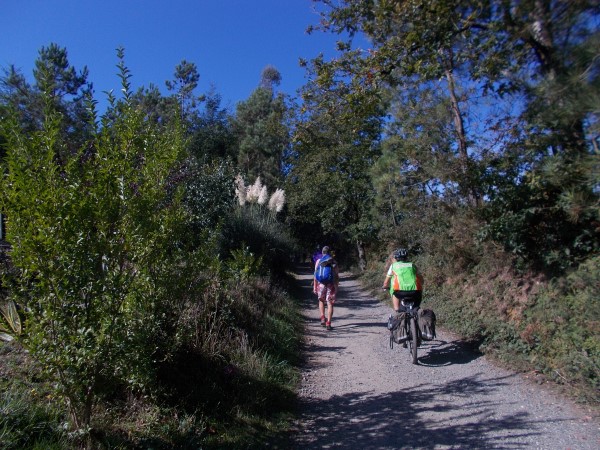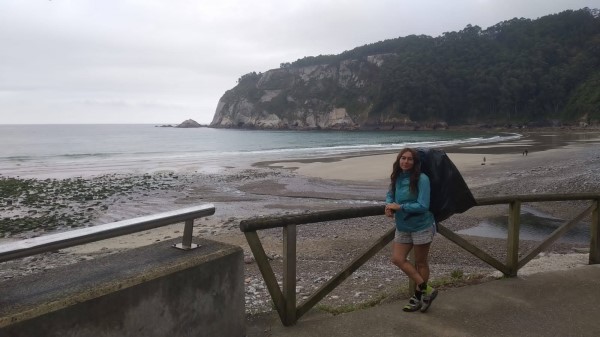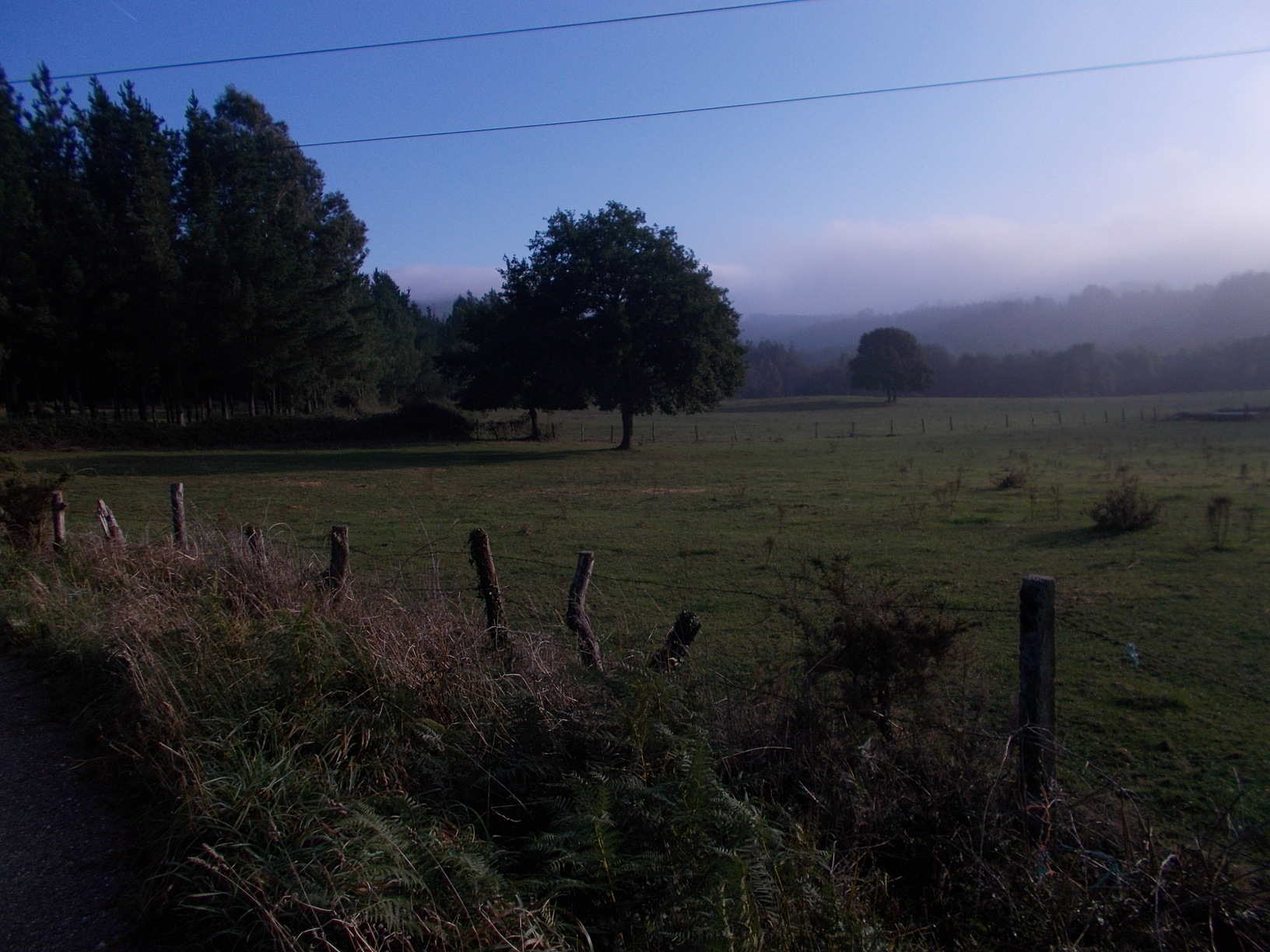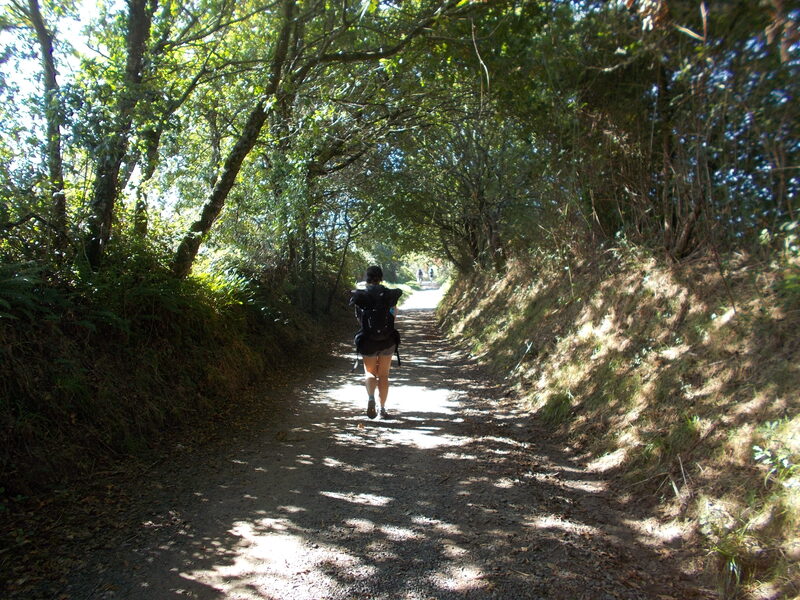I’ve been lucky enough to walk the Camino many times. I followed different ways, ranging from the most popular Frances and Norte, to the lesser known San Salvador and Camino Olvidado, and anything in between the two extremes. When I walked my first Camino Frances I spoke no Spanish at all. Sure enough, I considered learning Spanish, or at least doing some intensive crash-course before leaving my country, but you know how it always goes with such goals :). We are busy–work, private life, hobbies, etc, and I just didn’t find time to attend Spanish lessons. Perhaps you find yourself in the same boat, and wonder whether it is really necessary to speak Spanish to do the Camino, and to enjoy it.
I believe I can provide quite an accurate answer to this one, since almost ten years have passed between my first and last camino. I walked the first speaking no Spanish at all, and I walked the last being almost fluent in the language (when it comes to speaking, not writing). So what’s the actual difference? Can you walk and enjoy the Camino speaking English only? And what are you losing (or perhaps gaining?) not speaking any Spanish? I will try my best to answer the questions on the following lines.
Table of Contents
Camino Frances (“The Camino”) is a perfect way for English speakers
Money rules the world, and people do adapt, especially when their financial well-being depends on their ability to do so. Talking about the Camino Frances in its entirety, from Saint Jean Pied de Port to Santiago de Compostela (790 km/490 mi), Americans account for more than third of all pilgrims, in a normal year (not one affected by a pandemic), and the money they spend easily count for half of the entire amount of resources spent on Camino Frances.
Some people may argue here, saying that numbers of “compostelas” issued in Santiago do not reflect my claim. True, compostelas issues to Americans account only for 6% of all compostelas issued on a typical year. However, keep in mind that 95% of Spanish pilgrims (who account for 70% of all pilgrims in Spain) walk “only” the last 100 kilometers of the way from Saria, and their Camino typically takes just a prolonged weekend. Logically they spend considerably less money, and businesses along the way earn the majority of their income from English speakers.
In 90% of pilgrim hostels and bars/restaurants on Camino Frances you will get around with English
Businesses try to attract Americans instead of scaring them with Spanish menus. Staff is trained to handle the basic conversation in English, and address all typical requests a pilgrim can have in a bar, hostel, or pharmacy. What’s more, they often present their daily menu in up to five languages (Spanish, English, German, French, Portuguese/Polish)
You do not have to worry that you come to a bar and won’t be able to order the food or a beer to cool your body on a hot day. In the worst possible case, you will have an English menu, and will point with your finger to the item you want. And that’s the worst case scenario, because in most cases the waiter will communicate with you in English.
Interacting with other pilgrims is not an issue either
Many people do the camino on their own. Hoping to find new friends along the way, perhaps even new love, or at least strike conversations with other interesting people who do the camino for a variety of reasons, they wonder whether they’ll be able to do it without speaking Spanish. The answer is YES.
In a certain sense of a word, Camino is a “festival” of diversity. You’ll meet people from all corners of the globe, ranging in ages from 15 to 85. Many of them will travel alone, and most of them will speak English. So don’t worry, you do not need to speak Spanish to have meaningful interactions with other people who follow Camino Frances. You just have to be brave enough to approach them and start the talk :).

– A typical day on a French Camino, pilgrims from all around the world in front of you and behind you, and always someone you can strike a conversation with, should you feel like doing that.
Do you need to know Spanish walking one of the other Caminos?
Maybe you contemplate trying out Via de la Plata, or perhaps San Salvador, or one of the lesser known Caminos. The major difference between these ways and the major ways (Frances, Norte, Portuguese) is the infrastructure. Just a fraction of pilgrims walks the lesser known Caminos when compared to the famous ways. And since supply always follows the demand, you cannot expect that many places made especially for pilgrims.
Walking (or cycling) one of the lesser known caminos you won’t eat your meals in pilgrim restaurants. You will eat in places made for locals, and in most of them you can forget about getting the menu in English. What’s more, since these ways do not attract that many pilgrims, you cannot always rely on a help from another pilgrim who happens to speak Spanish. There simply may not be anyone around! Things can get a bit tricky in albergues (pilgrim hostels) as well, since the person running the place may not speak a word in English.
I do not want to discourage you though. You can still do these Caminos, and get around, for example with the help of your arms and legs, charisma, or with an assistance of a voice translator :). But you have to count with experiencing some situations that won’t be 100% comfortable, and you may not have that many interactions with people around you as you’d have on the French way. The key is to know what you are looking for on your Camino, and choose your way accordingly.
Speaking Spanish will give your pilgrimage a new dimension
The fact that you do not need Spanish to do the Camino doesn’t mean that it isn’t a good idea learning the language. I’ve become fluent in conversational Spanish over the years, and experienced entirely new facets of Spanish pilgrimages. First of all, people treat you differently when you speak their language. Maybe it is a subconscious thing on their end, but they somehow feel you sacrificed something to learn their language, and hence deserve more respect.
Incidents of restaurants and hotels charging Americans twice for something, or trying to cheat them in one way or another are quite common on the way. Not that it will happen everyday, but once you walk for 30-40 days you can count with one to five such incidents. Mark my words: it isn’t going to happen when you speak Spanish. Maybe they are afraid in such a case (that you will contact the police or local authorities for example), or they simply treat you better, not considering you a complete stranger anymore.

– Lola, a charming and interesting Spanish pilgrim I met on one of my Caminos. Speaking no Spanish I’d have no chance making a meaningful connection with her…
Locals also have their story to tell, and often it is worth hearing
I had at least twenty conversations on the caminos that I will never forget. Powerful conversations with fellow pilgrims, about their feelings, dreams, worries, ideals, and how they tried to fight them or attain them walking towards Santiago. And of course also about my worries, dreams and ideals :). It isn’t uncommon to talk with a pilgrim you know for a couple of hours about something you would not talk about with anyone back home… That’s the magic of the Camino. But these aren’t the only meaningful interactions you can have on a way.
Locals also have stories to tell. Stories about the life in the small places where we stay as pilgrims, their own dreams and problems, and how Camino impacts them. Locals know the hidden beaches and the best restaurants, they know what’s worth seeing and what’s just a tourist trap. Speaking English only, you can certainly do the camino, and have meaningful interactions with fellow pilgrims. But there is also one dimension of this experience you are missing.
May also interest you: Can I learn Spanish walking the Camino?
Final thoughts on a need to speak Spanish for the Camino
To sum it up, it is not necessary to speak any Spanish in order to do the camino, at least as long we talk about the most popular way from Saint Jean to Santiago (the Camino Frances). Things get more tricky on other, less popular ways, but you can always get around if you do not mind improvising a bit, and lacking interactions with people around you.
Having said that, speaking basic Spanish (A1-A2 level) will make your experience so much easier. It will also allow you to have some connections with locals, though they may consist only in a few polite phrases and smiles. You can get to such level in one or two months, and I believe if you have time, it is worth spending some of it learning the language. Attending Spanish lessons is your best bet, but free language learning platforms like Duolingo will also help you grasp the basics of the language.
Speaking Spanish on a conversational level will add an entirely new dimension to your Camino, allowing you to understand better the life of the locals, and have interactions with any people you meet on your way. It will also make you more independent on your Camino, since you won’t have to stick to pilgrim places only. No doubt it is the best option, but the final verdict is clear for me: You can do the Camino speaking no Spanish, and lack of language skills should in no way discourage you from embarking on this life-changing journey! Buen Camino!
Matej




![Ultralight Packing List for Camino de Santiago [2025 Edition]](https://caminolovers.com/wp-content/uploads/2022/03/altra-shoes-640-x-480.jpg)


